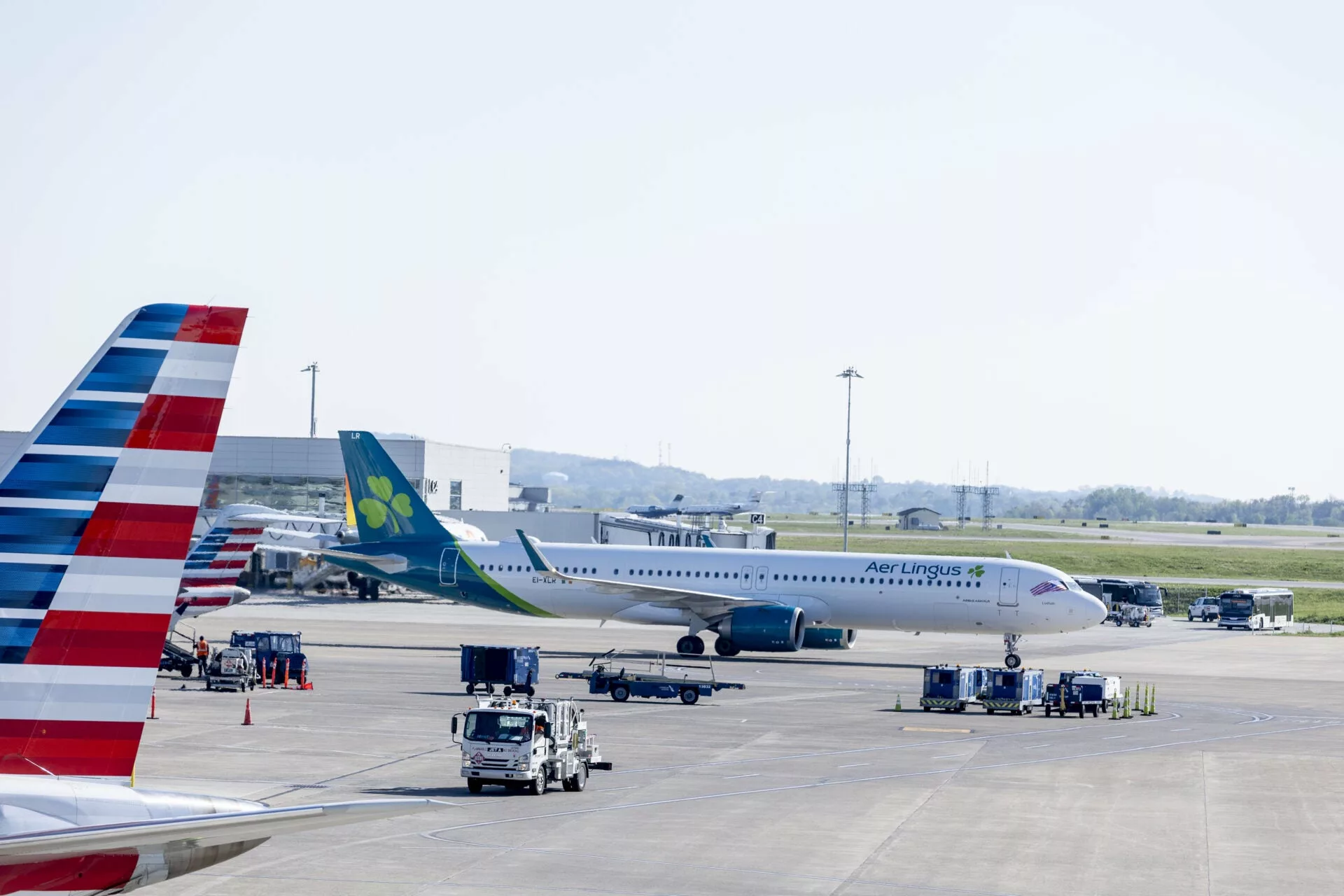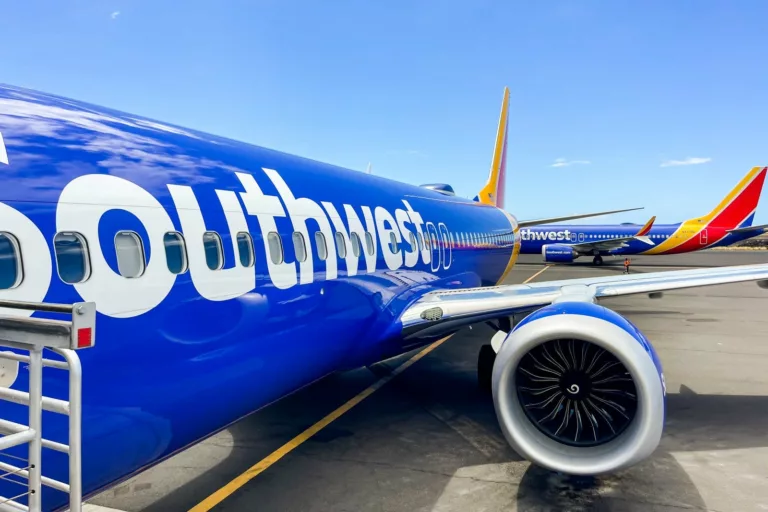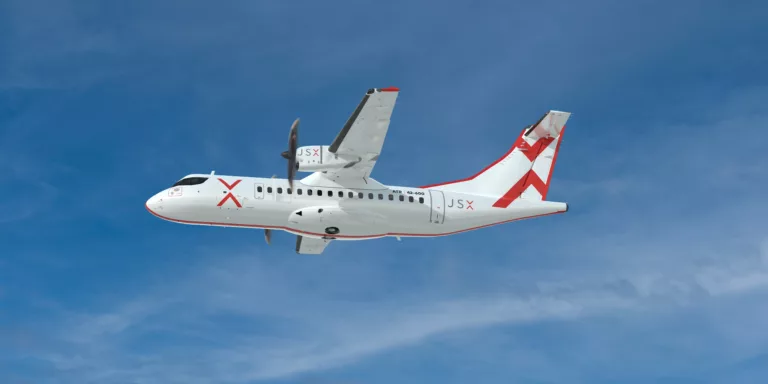Airlines Embrace the A321XLR as Demand for Long-Haul Flights Soars
This summer, Indiana marked a significant milestone with the return of nonstop flights to Europe, thanks to Aer Lingus’ inaugural service from Indianapolis International Airport (IND) to Dublin Airport (DUB). This new route not only connects the Midwestern city to the Irish capital but also opens the door to various European destinations, promising to boost tourism and economic growth in the region.
The catalyst for this expansion is the Airbus A321XLR, a long-range, single-aisle aircraft that can carry approximately 180 passengers over distances of up to 5,400 miles. As the latest addition to the highly regarded Airbus A321neo family, the A321XLR is designed to tap into “thinner” markets—those with latent demand that do not justify larger, traditional wide-body aircraft.
Chris Keen, Aer Lingus’ director of network planning, expressed enthusiasm about the A321XLR during a recent aviation conference in Hong Kong, stating, “It’s a fantastic aircraft for us.” Keen’s team chose Indianapolis and Nashville International Airport (BNA) as the first two U.S. destinations for the A321XLR. The aircraft is also set to serve Dulles International Airport (IAD) near Washington, D.C., and will begin flying to Raleigh-Durham International Airport (RDU) in North Carolina in April 2026.
Luis Gallego, CEO of International Airlines Group (IAG), which owns Aer Lingus, noted that the A321XLR presents “highly profitable flying through frequency, seasonality, and point-to-point network opportunities.” Iberia, another IAG airline, plans to deploy its A321XLRs to establish new routes to Philadelphia International Airport (PHL) and potentially Toronto Pearson Airport (YYZ) by 2026.
Travelers can look forward to modern, well-designed interiors on Aer Lingus and Iberia’s A321XLRs, making for a comfortable flying experience. Aviation analyst Tom Fitzgerald from TD Cowen reported that passengers rate their experience on the A321XLR similarly to that on larger twin-aisle planes, based on customer feedback.
However, the rapid growth of the A321XLR program faces challenges. The limited availability of the aircraft has been a concern, with Aer Lingus currently expecting to receive only six planes by year-end. Iberia is also waiting for its final A321XLR, with a total of eight on order. Keen indicated that the airlines could do much more with additional aircraft.
The delays in the A321XLR’s certification and ongoing supply chain issues have compounded the problem, pushing back the delivery of the first aircraft by over a year. American Airlines, one of the largest customers for the A321XLR, recently received its first aircraft but has had to park it in the Czech Republic due to delays in seat deliveries.
With demand for new aircraft stretching into the early 2030s, the prospect of acquiring more A321XLRs in the near future seems unlikely. In a strategic move, Greece’s Aegean Airlines recently opted to purchase two A321XLRs from JetBlue, scheduled for delivery in 2026, to expedite its long-haul expansion plans.
Airbus aims to ramp up production to 75 A320neo-family aircraft per month by 2027, although specifics on the number of A321XLRs included in that target remain undisclosed. The A321XLR’s appeal lies in its ability to open new, thinner long-haul routes, especially as Boeing has yet to offer a comparable aircraft. The company’s plans for a “New Midsize Airplane” were put on indefinite hold in early 2020, effectively leaving the segment to Airbus.
For full-service airlines like Aer Lingus, American Airlines, and United Airlines, the A321XLR offers a promising solution for lower-density layouts featuring both business and economy seating. Despite its operational range being slightly less than the advertised 5,400 miles—due to safety modifications required by European regulators—the A321XLR can connect numerous cities in the eastern U.S. with destinations in Western Europe.
Aer Lingus, with its Dublin hub strategically positioned close to North America, can utilize the A321XLR to reach cities like Nashville, which is approximately 3,905 miles from Dublin. Other potential destinations could include Detroit Metropolitan Wayne County Airport (DTW), Minneapolis-St. Paul International Airport (MSP), and Pittsburgh International Airport (PIT).
American and United Airlines also see significant potential for the A321XLR to establish new routes to Europe from their respective hubs in Philadelphia and Washington, D.C. Meanwhile, Qantas is exploring similar long-haul opportunities in Southeast Asia and the Pacific from its Australian hubs.
However, Aer Lingus has expressed some concerns regarding the A321XLR’s capabilities. The airline anticipates potential payload restrictions on U.S. routes during the winter months when westbound flights may face stronger headwinds. Such restrictions could limit revenue potential by necessitating the blocking of seats or reducing cargo capacity.
The A321XLR may not meet the expectations of budget airlines looking to maximize capacity on longer flights. Increased seating density can add weight to the aircraft, which may affect performance and range. For instance, an Iberia investor presentation indicated that the maximum range for a fully-loaded A321XLR might be around 4,500 miles—about 900 miles less than Airbus’s claim—with 192 seats configured.
Aer Lingus and Iberia plan to configure their A321XLRs with 184 and 182 seats, respectively, potentially allowing for longer flights. However, budget carrier Wizz Air, which intends to fit 239 seats on its A321XLRs, may face limitations in range.
József Váradi, CEO of Wizz Air, acknowledged that the A321XLR had “underperformed in terms of weight and range,” leading the airline to convert most of its order for 47 A321XLRs to other A320neo-family models. Similarly, U.S.-based Frontier Airlines has shifted its order for 18 A321XLRs to other Airbus aircraft.
An Airbus spokesperson reaffirmed the A321XLR’s advertised range but declined to comment on specific airline operations. Brett Snyder, author of the Cranky Flier blog and co-host of “The Air Show” podcast, noted that while the A321XLR may not achieve the range needed for certain routes, it will still provide opportunities for airlines to explore new routes and markets.
As airlines continue to adapt to changing travel demands, the A321XLR represents a significant advancement in long-haul air travel, offering the potential to connect more cities and enhance the overall travel experience for passengers.






